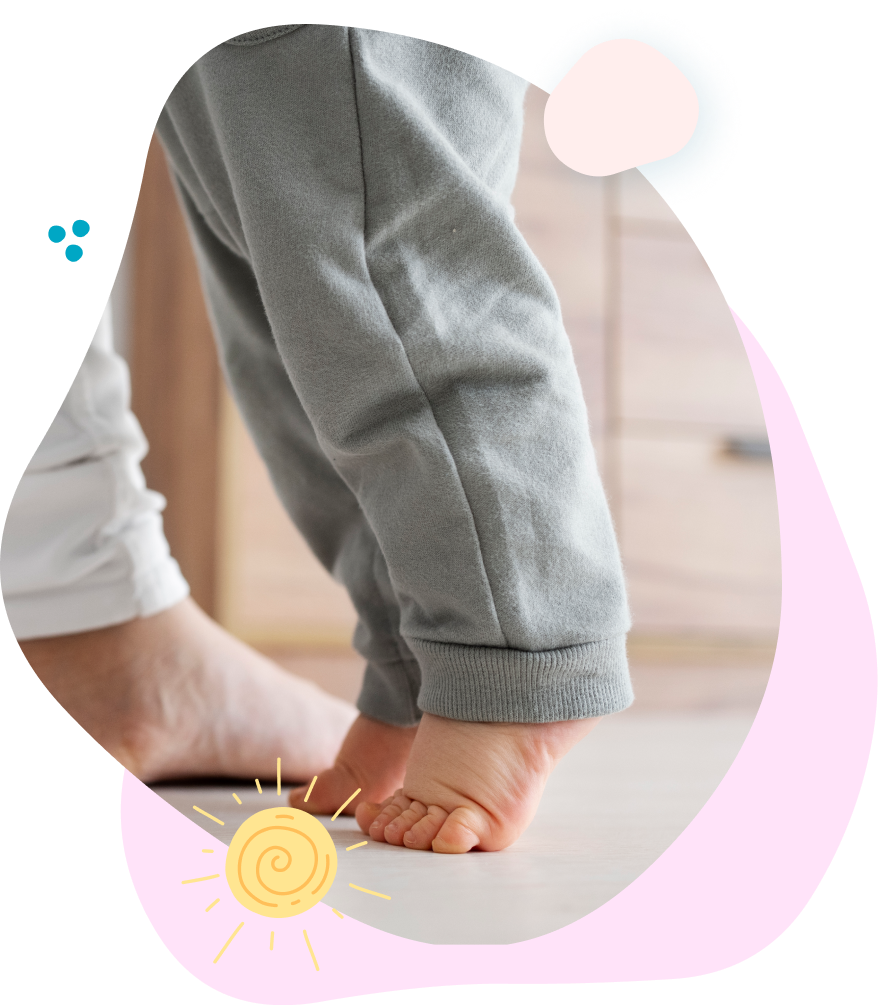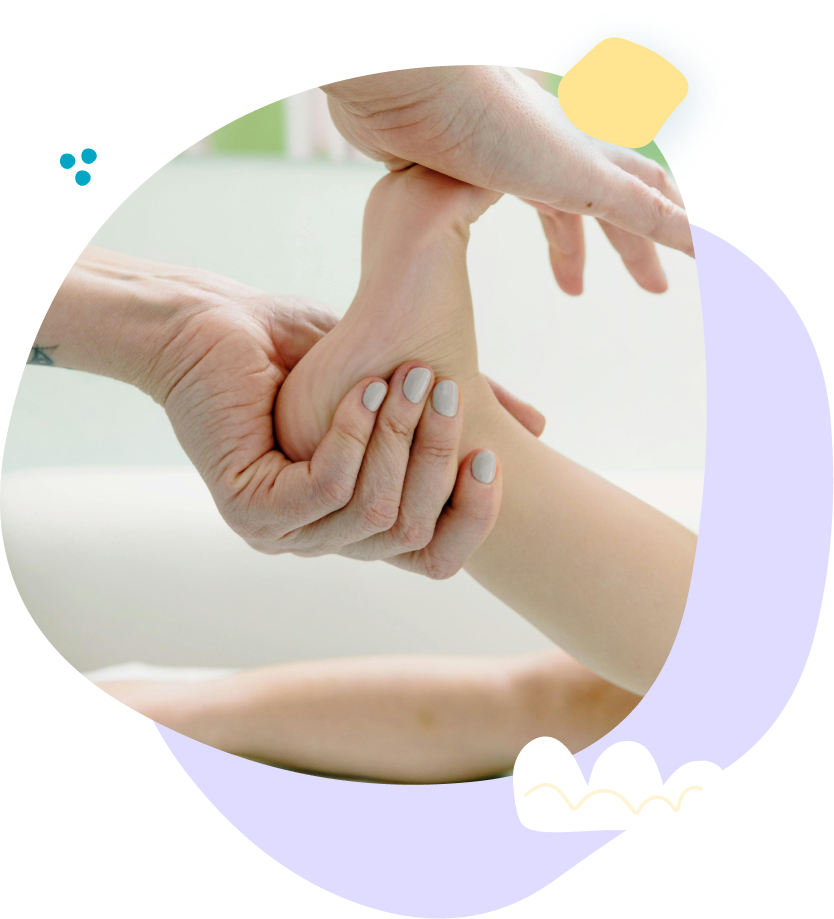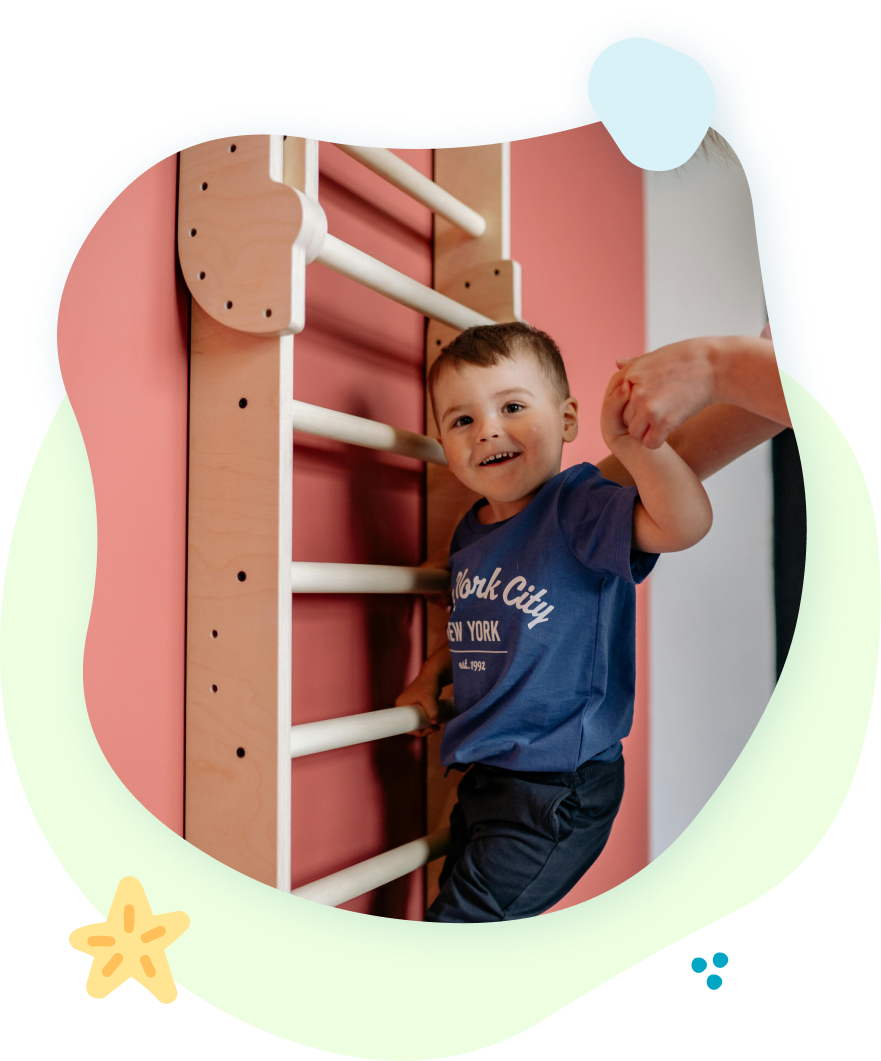Your Clinic
SET A LOCATION
Your Clinic
SET A LOCATION
Toe walking is a walking pattern where a child walks on their toes or the balls of their feet without their heels touching the ground. While it is common in toddlers who are learning to walk, persistent toe walking beyond early childhood may signal underlying issues. Physical and occupational therapy (PT and OT) can play a crucial role in addressing this condition and improving mobility, independence, and quality of life.
Toe walking can arise from several factors:
Idiopathic Toe Walking: Habitual toe walking without an identifiable medical cause.
Neurological Conditions: Disorders like cerebral palsy, muscular dystrophy, or autism spectrum disorder (ASD).
Tight Muscles or Tendons: Limited range of motion due to tight calf muscles or a shortened Achilles tendon.
If left untreated, persistent toe walking can lead to muscle imbalances, joint pain, and challenges with balance and coordination.

Children who toe walk benefit from our targeted therapeutic tools that address the underlying causes, whether habitual, sensory-based, or related to muscle tightness. Our interventions work to establish a more typical heel-toe walking pattern.


Attend our clinics for expert orthotics evaluations and fittings, designed to improve mobility and ensure optimal comfort tailored to your needs. Children at PPT can attend monthly clinics for custom wheelchairs or orthotics, designed to enhance mobility and ensure proper postural alignment. These specialized devices support proper body alignment and improve functional mobility.
PPT uses cutting-edge tools like Galileo whole-body vibration platforms and Mano dumbbells to enhance therapy outcomes. Therapeutic vibration helps to optimize neuroplasticity, promote motor learning and decrease the complications of many childhood conditions that limit movement, sensory processing skills, and learning. A unique therapeutic intervention used to decrease muscle tightness, change habitual patterns of movement in a single joint, or improve range of motion.
The Turtle Brace is a specialized orthotic device designed to provide targeted support and positioning for children with specific postural or alignment needs. This custom-fitted brace helps maintain proper body positioning and supports therapeutic goals related to posture, movement patterns, and functional positioning during activities.

Physical therapy (PT) focuses on addressing the underlying causes of toe walking and promoting proper walking mechanics through a variety of strategies:
Activities designed to enhance stability and dynamic balance, like navigating uneven surfaces or obstacle courses.
Occupational therapy (OT) complements PT by addressing sensory and functional challenges related to toe walking. Key approaches include:
Helping children process proprioceptive (body position) and tactile input to improve their walking patterns.
Incorporating proper gait patterns into everyday activities like climbing stairs, playing, or dressing.
Suggesting home or school modifications to support safe and effective movement.
Recommending tools like weighted footwear to encourage a heel-to-toe gait.
Together, speech and occupational therapy provide a comprehensive approach to helping children thrive in social settings.

Early intervention can prevent complications such as chronic pain, reduced mobility, or difficulty with social participation. Therapy helps children:
If your child exhibits signs of toe walking or experiences walking difficulties, schedule an evaluation with our team. Early treatment can make a lasting difference in your child’s mobility and quality of life!
We empower children, families, and the community to learn, grow, and celebrate every child's unique abilities.
Quick Links
Contact Details
Phone: 561-376-2573 | 561-918-0190
Fax: 561-218-4939
VIP Concierge: 561-717-1764
Clinic Locations
All Rights Reserved | Progressive Pediatric Therapy, Inc. | Privacy Policy | Terms of Service
Site by Spearlance